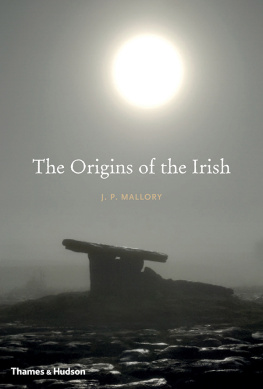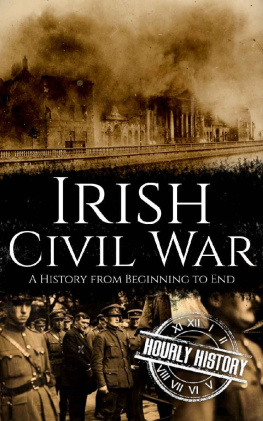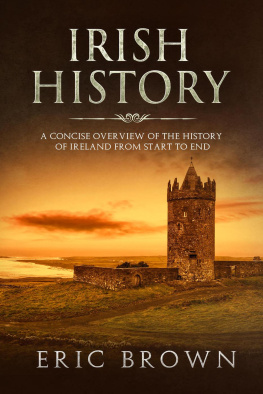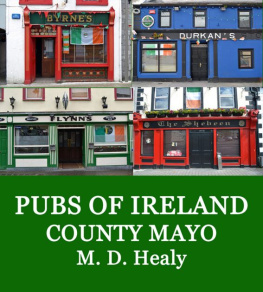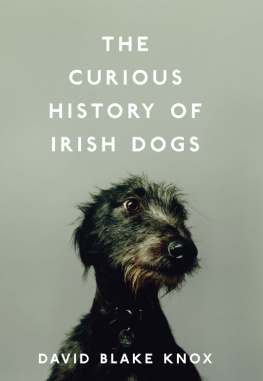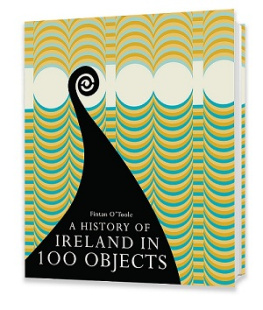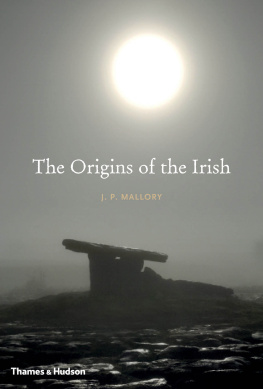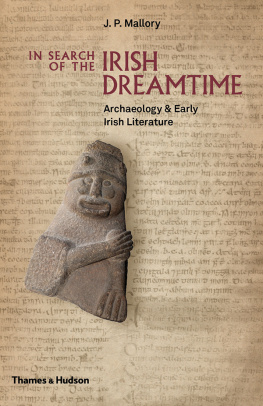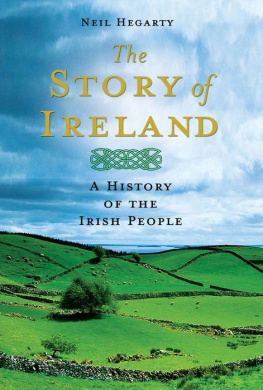After a night that could not have been entirely pillow talk, Cairenn, the mother of Niall, carried within herself a fertilized egg weighing about 0.000005 grammes. For the sake of illustration we will presume that when the infant grew up to be the famous Niall of the Nine Hostages he weighed about 70 kg (or 155 lbs). In the 4th century young Nialls diet (excepting the odd wine shipment) would have been derived entirely from Ireland and its offshore waters. In short, the future High King of Ireland was in effect a reconstituted mass of Irish geology and hydrology that had been processed into an Irish adult (though recycled back into Irish soil about every two months).
The body of an Irishman contains up to 59 of the 92 naturally occurring elements. One of these, hydrogen, accounts for about one-tenth of the mass of a human being and for a 70-kg Niall, the other very light elements (helium, lithium, beryllium and boron) only provide about 25 mg. Some of the other elements are plentiful, such as the c. 43 kg of oxygen (which, like hydrogen, is largely tied up in water molecules) and 16 kg of carbon, while most of the rest are only slightly attested. For example, we could squeeze a lethal dose of arsenic out of about 150 Irishmen but it would take us on the order of 5,000 of them to obtain a gramme of gold. And to turn the Irish into a weapon of mass destruction, it would take about 70 million of them (or of anyone else) to provide enough uranium for a small atomic bomb. As there are an estimated 80 million people who claim Irish descent, this could be managed with people to spare.
It is obvious then that in order to construct Niall we are going to have to combine a great many elements. Some of these, the lighter ones such as hydrogen, may be a residue of the Big Bang. But the rest are heavier elements that make up Niall and the rest of the solar system, and these required a death. Some 4.6 billion years ago the Earth formed out of the dusty residue of previously exploded and obviously nameless stars. We know this because only the hot internal engine of a star can manufacture the range of heavier elements that constitute a planet and the creatures that occupy and sometimes write books about it. Most of our Earth consists of iron (35%), oxygen (30%), silicon (15%) and magnesium (19%), and these elements could only be created in a star much larger than our own sun. To create anything with an atomic weight greater than iron we need the explosion provided by a supernova.
It is clear then that at the most basic level any search for the origins of the Irish leads us into the physical composition of Ireland. This is not just a matter of chemistry but also geography. Any search for Irish origins must be rooted in Ireland. Trace if you will the Irish back to a homeland in Britain, France or Spain, and you are led into a logical conundrum that wherever they come from they have no claim to being Irish unless they have lived on the island. Let us imagine, for example, our Proto-Irish sailing out of the Bay of Biscay in two ships. A storm ensues and only one makes it to Cork while the second is forced ashore in Cardiff. Is there anything about the occupants of the second boat that we can now regard as Irish?
The geology of Ireland, then, not only provides a setting in which to tell our story but it also provides one answer to the question of Irish origins. The earliest Irish were direct products of the land they occupied: no Irish geology = no Irish people. And we must be careful here because the physical form of Ireland is deceiving.
Historians have abandoned what they refer to as the essentialist approach to nations, the concept that nations are individually prescribed by nature rather than invented by their populations. there appears to be a natural border to Ireland that invites us to contemplate a timeless land of lush green fields surrounded by an obviously natural barrier, the sea. A natural scientist would know how illusory this romantic image actually is. Neither the shape, appearance, composition nor location of Ireland has been constant through time, nor will any of these be so in the future. From a geological viewpoint, Erin go bragh (Ireland forever) is wishful thinking. The Ireland that we know today was a geological accident forged between two continents and then frozen, dunked beneath warm seas, lifted in part to the heights of the Himalayas, covered with lush tropical swamps, blistering deserts and vast expanses of molten rock, then again buried under ice and finally thawed out. It took a lot of changes to make the Ireland we have right now, and the processes that forged the present Ireland will ensure that it will keep changing.
From hell to basement Ireland
Out of the remains left after about 10 billion years of the creation and collapse of older stars, both our sun and the planets that circle it were assembled from a spiralling disc of cosmic debris. A superheated Earth passed through the initial period of its history, the Hadean eon (named after Hades), which ended c. 3.8 billion years ago. Throughout this period the Earths surface was molten, covered by a magma ocean of molten rock, exuding a miasma of noxious gases from erupting volcanoes. It endured a constant onslaught of meteors that pocked its surface to resemble the crater-marked surface of the moon. Although the main period of meteoritic onslaught concluded with the end of the Hadean, the Earth still absorbs 36,000 metric tons of meteorites every year.
In the period from 3.8 to 2.5 billion years ago the surface of the Earth had cooled enough to permit the formation of a rocky crust. During this period, known as the Archaean eon, about 80% of the Earths crustal surface was formed, dotted with small proto-continents. By 3.8 billion years ago it is also believed that the temperature had cooled enough for the water vapour expelled by volcanic activity to fall as rain. The amount of water may have also been supplemented by the giant ice tails left by passing comets and water-rich meteors. The rain first filled the numerous craters and then spilled over to expand eventually into a world ocean. By about 3.5 billion years ago there emerges the earliest evidence of life in the form of bacteria.
As land-dwellers we have a very parochial view of the ocean. Even though we know that the greatest part of the Earth is covered by water we still imagine that it is the water that surrounds the land. In fact, if it were not for the fact that we have a very active planet pushing its crust upwards, there would probably be no land in the first place. The continents that we have are merely floating by virtue of the fact that they consist of lighter material than the basalt bed of the sea. Obviously, the story of Ireland cannot begin before we have some land and, over time, the amount of land has been increasing such that there is now about twice as much as there was 2 billion years ago. Still, the area of the Pacific Ocean alone exceeds that of all the land on the planet.
It is in the next major geologic period, the Protoerozoic eon (2.5 billion to 545 million years ago), that Ireland offers some specific clues to its most distant past. The story does not begin in the north Atlantic, however, but between the equator and the South Pole, around which most of the Earths landmasses were then clustered. About 1.7 billion years ago the sandy shore of an earlier proto-continent was pushed back deep into the Earths crust to be heated to about 700C (1292F), not hot enough to (re)melt it but hot enough to alter it chemically into a metamorphic rock known as gneiss. Later, when the land buckled to form mountains, the gneiss was pushed upwards to be exposed today on the northernmost part of Ireland, the island of Inishtrahull off the north coast of Donegal (and running under the sea to Colonsay and Islay in Scotland); somewhat later formations of gneiss can be found in the mountainous regions of counties Mayo, Sligo and Tyrone. Such gneisses form the geologic basement of Ireland; while this may seem quite early, northwest Scotland and the Hebrides offer evidence for gneisses formed from still earlier magma (
Next page
